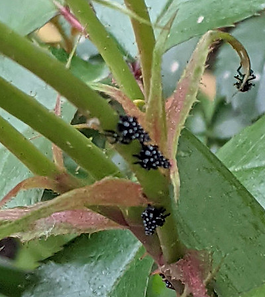So, last year I was vigilantly tracking, capturing, and killing spotted lanternflies. I was quite proud of myself because none of my plants, shrubs, or trees were overtaken by them. But, alas, all good things come to an end. I just spied them the other day in their nymph stage attached to the stems of my rose bushes! However, I think I found a way to control and kill them before they progress to the next stage. Read on to learn how to control the dreaded Spotted Lanternfly.
Stages of Spotted Lanternfly
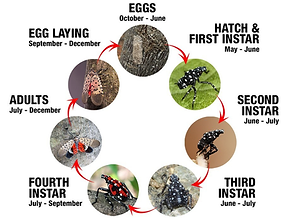
The Spotted Lanternfly has basically 3 stages of life. These include 4 nymphal (or instar) stages, adult stage, and the egg mass stage in which they survive the winter. For more information on the life cycle of a lanternfly, refer to the Cornell College of Agriculture and Life Sciences.
The Spotted Lanternfly was first observed in Berkshire County, Pennsylvania back in 2014. Since then according to the Department of Agriculture in 2021, it has spread to New Jersey, Virginia, Delaware, Maryland, New York, West Virginia, Connecticut and Ohio. In March of 2022 they were found in Union County, and now they are here in Burlington County, New Jersey.
The Department of Agriculture is warning everyone to kill the lanternflies as you see them in your garden. For more information on Spotted Lanternflies, click What is a Spotted Lanternfly.
How to Control the Spotted Lanternfly – Safe to the Environment
Your first instinct may be to go to your local store and purchase an insecticide. However, the following options are much safer for the environment than purchasing strong chemicals sold in stores to control insects. They are safe for pets and children, and knowing what you are spraying makes it much safer for everyone. Also, you do not want to kill all the insects. Many of them are beneficial to the gardener and farmer.
Isopropyl Rubbing Alcohol and Water
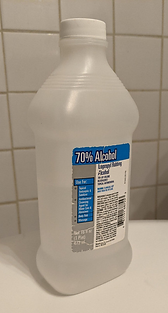
Since I saw the lanternfly in my garden in early May, I decided to try a few things to rid my garden of them. I created a mixture of Isopropyl 70% rubbing alcohol, water, and Dawn dishwashing liquid and transferred it to a spray bottle.
Instead of an even ratio of water and rubbing alcohol, which many researchers have suggested, I decided to try a smaller quantity of rubbing alcohol since the nymphs are on a delicate rose bush. I used more of a 2 to 4 ratio. In other words, 2 parts rubbing alcohol to 4 parts water, (half a cup of rubbing alcohol to a full cup of water), and then added a squirt of Dawn dishwashing liquid to the mix.
However, I noticed that this ratio of the solution was not killing the nymphs nor was it damaging the rosebush. Therefore, I have since increased the ratio of water to alcohol to 50% to 50% (half and half). Every morning as I pass by the bushes I spray the nymphs.
After a few weeks I have noticed they are dying and are much less popping up.
Preparation
Before you use the solution on an entire plant, first test the solution on a small area. Some plants may be too delicate for this type of solution. Leave the solution on for a day or two and see how your plant fares. If it looks good, continue using it. If the plant is beginning to brown out and shrivel, either discontinue or add a smaller volume of rubbing alcohol to the water.
Nymph Stage
At the nymph stage of development, the shell has not fully developed, making it more penetrable. Once they grow into adulthood, it is tough for sprays to penetrate the shell leading to the soft tissue of the insect. Therefore, to use this method of controlling Spotted Lanternflies, try to spray the nymph as early as possible.
Because rubbing alcohol is a solvent, the alcohol dissolves the bug’s cells. It also dries out the bug as it evaporates. What a way to die!
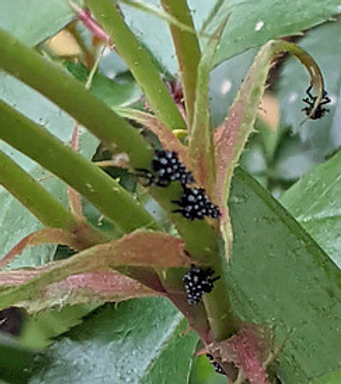
I have been trying this method for the last week and have noticed less and less nymphs crawling on the stems of my rose bushes. I intend to continue spraying the lanternflies until, hopefully, I do not see them any more.
Vinegar and Water
White Vinegar
To kill the Spotted Lanternfly on contact, use straight white vinegar from a spray bottle. But, be careful!
WARNING: White vinegar will kill all vegetation! Do not use on plants, trees, or shrubs you want to keep alive!!
Spray in early morning or early evening when there is little to no wind. You do not want the spray to travel to other areas of your garden via a breeze.
A vinegar and water solution (equal parts) is also used to kill weeds on a patio. If you are using it to kill weeds, apply the solution when you know it will not rain for a few days. The weeds will soak up the solution when the weather is dry. Again, take heed to the warning above when using a spray solution with vinegar.
If you’re wondering about the safety of homemade insecticides, read Soap and Vinegar are Fine Insecticides from the New York Times Home and Garden section.
Homemade Traps for the Spotted Lanternfly
A homemade trap is very easy to make using apple cider vinegar and a dishwashing detergent such as Dawn.
In a mason jar, combine 1/8 dishwashing soap to 7/8 apple cider vinegar (one ounce of dishwashing detergent, seven ounces of apple cider vinegar). Place the unsealed jar on the ground or hang it in a tree where there are Spotted Lanternflies. It will kill insects for a long time if left alone. The smell of the vinegar attracts the Spotted Lanternfly and the dishwashing liquid is sticky so, once inside, it will asphyxiate (smother) them.
Place a few jars at a time around the area if you have a large infestation. Beware because, again, the homemade solution does not discriminate which insect it kills. You may be also killing good bugs.
Neem Oil and Other Oils
Neem Oil
Neem Oil (Purchase through Amazon) is supposed to kill the Spotted Lanternfly instantly. I have not had the need to use it, but perhaps I will if the infestation in my yard worsens. Spray it on the insect and the oil will asphyxiate it.
Neem Oil is naturally safe for all plants, mammals, birds, butterflies, and bees. Harmful insects need to ingest the leaves, flower, or stem of a plant that was treated with Neem Oil in order for it to kill them.
Indoor plants as well as outdoor plants benefit from using Neem Oil to control insect infestation. In addition to killing the Spotted Lanternfly, Neem Oil is used to control aphids, mealybugs, whiteflies, Japanese beetles, leafhoppers, thrips, fungus gnats, along with spider mites and nematodes. Neem oil can also kill fungal diseases like powdery mildew, black spot, and scab.
TIP: When using a homemade spray solution to control insects, spray in the early morning or evening before the beneficial bugs wake up to feed. Also, do not spray in the heat of the day; the solution may scorch the leaves if it is exposed to the hot sun.
Essential Oils
A few drops of tree tea oil, lavender essential oil, or peppermint oil mixed with water should instantly kill the Spotted Lanternfly. The strong smells of the oils make it difficult for the lanternflies to survive. Purchase essential oils through Etsy.
A Plant That Attracts the Spotted Lanternfly
In my previous blog on the Spotted Lanternfly I spoke of a particular plant that attracts this pesky and deadly bug…….Common Milkweed! However, there is a caveat. Yes, the flies are naturally attracted to this plant so you would think that they would find a safe haven, multiply, and live happily ever after. Not so! Since the Spotted Lanternfly is indigenous to China, India, and Vietnam, it has never been exposed to native plants from the US. One such plant is the Common Milkweed.
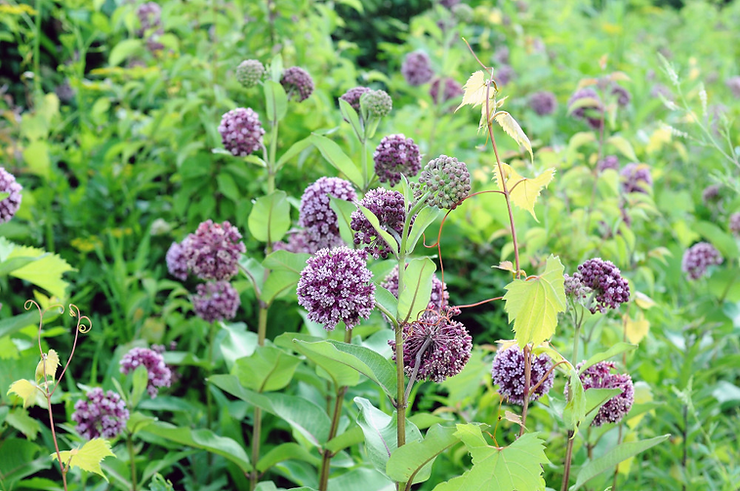
Once, the lanternfly eats the milkweed, it dies because the milkweed is poisonous to Spotted Lanternflies!
WARNING! According to Poison Control, “All parts of the plant contain toxic cardiac glycosides, which can cause nausea, diarrhea, weakness, and confusion in small amounts, and seizures, heart rhythm changes, respiratory paralysis, and even death in large amounts. Milkweed can also irritate the skin and eyes if touched.”
I have recently purchased a Common Milkweed (Purchase through Nature Hills Nursery) and, once it arrives, I will plant it next to the rose bushes where the Spotted Lanternfly nymphs are most prevalent. Stay tuned for an update to see if this actually works.
Final Thoughts Regarding the Control of the Spotted Lanternfly
Yes, unfortunately they’re back! No one wants them in their garden, crops, or parks. If we all act with due diligence perhaps we can keep them under control. Try using the natural ingredients described in this article to create sprays, traps, and food to combat this infestation. For more information on the origins and nature of the Spotted Lanternfly, check out What is a Spotted Lanternfly?
I hope you learned a thing or two about these pesky insects and are willing to try some of the natural remedies I’ve highlighted. Please leave a comment below and share this post with others.
Happy Gardening!
Nina

